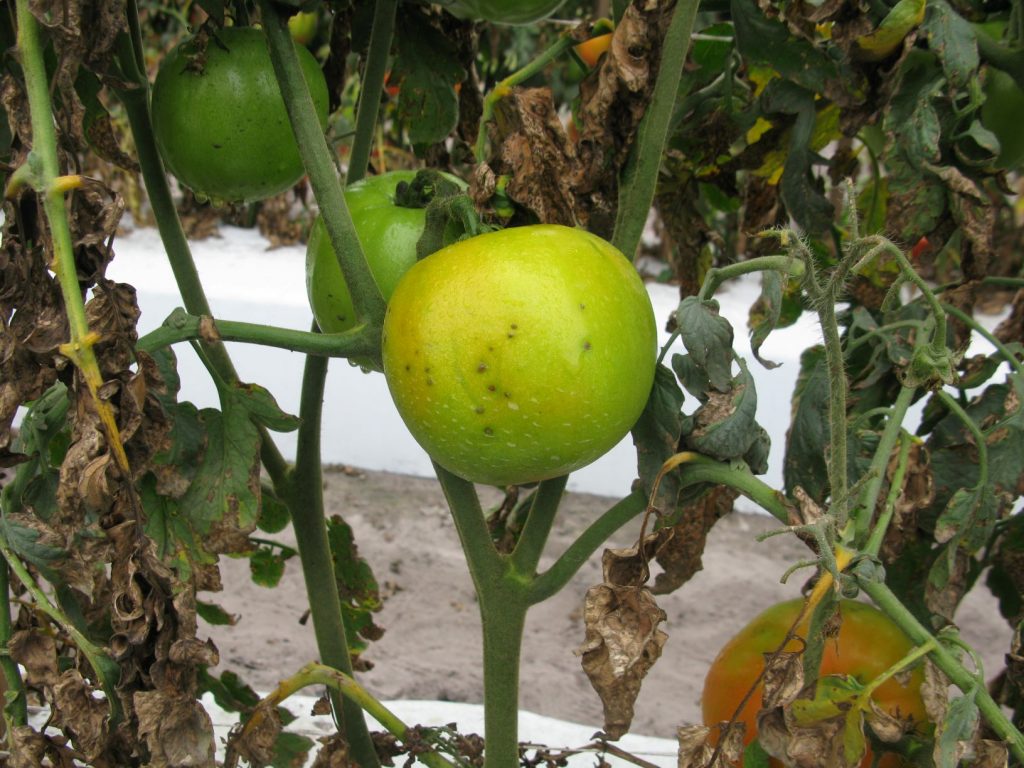
By: Brad Buck, 813-757-2224 (office); 352-875-2641 (cell); bradbuck@ufl.edu
A destructive disease known as bacterial spot can ruin tomatoes anywhere it strikes. That’s why University of Florida scientists want to understand how the pathogen that causes the disease spreads and evolves on farms.
A couple of quick statistics illustrate the importance of tomatoes to Florida’s agricultural economic sector: Fresh market tomatoes bring in $400 million to $500 million annually in Florida, according to the U.S. Department of Agriculture. Further, UF/IFAS economists reported tomato losses due to bacterial spot of almost $900,000 in the 2007-08 growing season. Those are the most recent dollar figures for the cost of the disease to Florida tomatoes.

Erica Goss, an associate professor of plant pathology at UF/IFAS, was awarded a $455,000 grant by the National Institute of Food and Agriculture, an arm of the U.S. Department of Agriculture, to study the epidemiology of bacterial spot in tomatoes.
“Through this research, we hope to more quickly and effectively respond to changes in the bacterial spot pathogen that cause more disease problems in the field,” Goss said.
“We’re studying epidemics. Plant disease epidemiology does not often include the possibility that the pathogen evolves within or between seasons,” said Goss, who works from the main UF campus in Gainesville, Florida. “We are going to look at the effect of pathogen evolution — including the gain and loss of genes that we have observed to have occurred in Florida — on the spread of the pathogen from plant to plant in a given field.”
Bacterial spot of tomato is especially severe in the southeastern United States, where hot weather, high humidity and rain can induce disease development, according to a UF/IFAS Extension document.
A pathogen called Xanthomonas perforans, which constantly changes, causes bacterial spot in Florida tomatoes.
Goss and her team want to find out how quickly the pathogen changes — and how it changes — so they can keep track of bacterial spot in tomatoes.
“We see lots of types of this pathogen in Florida tomato fields,” Goss said. “We are going to determine which types of changes happen in the pathogen’s genome over the course of a tomato-growing season in a field. We are also going to determine how specific changes in the genome affect how the pathogen moves from plant to plant during a season in a field.”
To find the problematic pathogen strains, scientists will use high-throughput genetic testing.
“We will send a genome-sequencing center the extracted DNA from hundreds of bacterial strains, and the technology will send us data we can use to study the genomes of these strains,” Goss said.
Other UF/IFAS researchers will work closely with Goss as she investigates bacterial spot as an epidemic. They include Gary Vallad, professor at the UF/IFAS Gulf Coast Research and Education Center in Balm (Hillsborough County), Florida; Mathews Paret, associate professor at the UF/IFAS North Florida Research and Education Center in Quincy, Florida; Jeff Jones, distinguished professor at UF/IFAS in Gainesville and Sujan Timilsina, a post-doctoral researcher – all in the plant pathology department at UF/IFAS.









